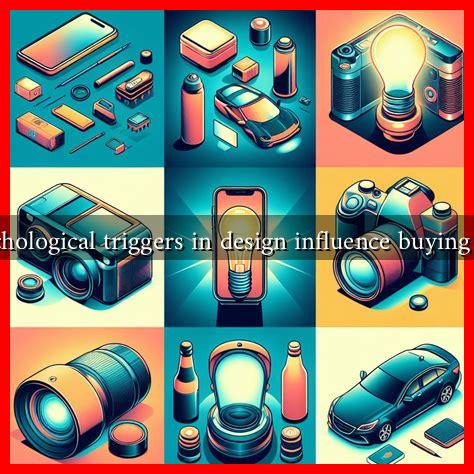-
Table of Contents
What Psychological Triggers in Design Influence Buying Decisions?
In the competitive landscape of retail and e-commerce, understanding the psychological triggers that influence buying decisions is crucial for designers and marketers alike. The design of a product, website, or advertisement can significantly impact consumer behavior, often in ways that are subtle yet powerful. This article explores the key psychological triggers in design that can sway purchasing decisions, supported by research, examples, and case studies.
The Power of Color
Color is one of the most immediate and impactful elements of design. It can evoke emotions, create associations, and even influence perceptions of quality. Research shows that color can increase brand recognition by up to 80% and can affect purchasing decisions by as much as 85%.
- Red: Often associated with urgency, red can stimulate appetite and is frequently used in clearance sales.
- Blue: Conveys trust and dependability, making it a popular choice for financial institutions.
- Green: Represents health and tranquility, often used in organic and eco-friendly products.
- Yellow: Evokes optimism and is effective for attracting window shoppers.
For example, McDonald’s uses red and yellow in its branding to create a sense of urgency and happiness, encouraging customers to make quick decisions. In contrast, brands like Facebook and Twitter use blue to foster trust and reliability.
Visual Hierarchy and Layout
The arrangement of elements on a page can guide a consumer’s attention and influence their decision-making process. A well-structured layout can lead to a more intuitive user experience, making it easier for customers to find what they need.
- Focal Points: Use larger images or bold text to draw attention to key products or offers.
- Whitespace: Adequate spacing can enhance readability and reduce cognitive overload.
- Flow: Arrange elements in a way that naturally guides the eye from one section to another.
Amazon is a prime example of effective visual hierarchy. The website uses a clean layout with clear focal points on deals and bestsellers, making it easy for users to navigate and make purchases.
Social Proof and Testimonials
Humans are inherently social creatures, and the desire to conform can heavily influence buying decisions. Social proof, such as reviews, ratings, and testimonials, can significantly impact consumer trust and perceived value.
- Customer Reviews: Positive reviews can enhance credibility and encourage purchases.
- Influencer Endorsements: Collaborations with trusted figures can sway their followers’ buying decisions.
- Case Studies: Showcasing successful use cases can validate a product’s effectiveness.
A study by BrightLocal found that 91% of consumers read online reviews before making a purchase. Brands like Glossier leverage user-generated content and testimonials on their website to build trust and encourage new customers to buy.
Scarcity and Urgency
The principles of scarcity and urgency can create a fear of missing out (FOMO), prompting quicker purchasing decisions. When consumers perceive that a product is in limited supply or that a deal is time-sensitive, they are more likely to act swiftly.
- Limited-Time Offers: Countdown timers can create urgency and encourage immediate action.
- Low Stock Notifications: Alerts indicating limited availability can trigger quick decisions.
- Exclusive Deals: Offering special promotions to a select group can enhance desirability.
For instance, Booking.com frequently uses phrases like “Only 2 rooms left!” to instill urgency, leading to increased conversion rates.
Conclusion
Understanding the psychological triggers in design that influence buying decisions is essential for creating effective marketing strategies. By leveraging color psychology, visual hierarchy, social proof, and principles of scarcity, brands can enhance their appeal and drive consumer behavior. As the marketplace continues to evolve, staying attuned to these psychological factors will be key to maintaining a competitive edge.
Incorporating these insights into design not only improves user experience but also fosters trust and encourages purchases. As you refine your design strategies, consider how these psychological triggers can be effectively utilized to influence buying decisions and ultimately drive sales.
For further reading on the psychology of design, check out Nielsen Norman Group’s insights.

